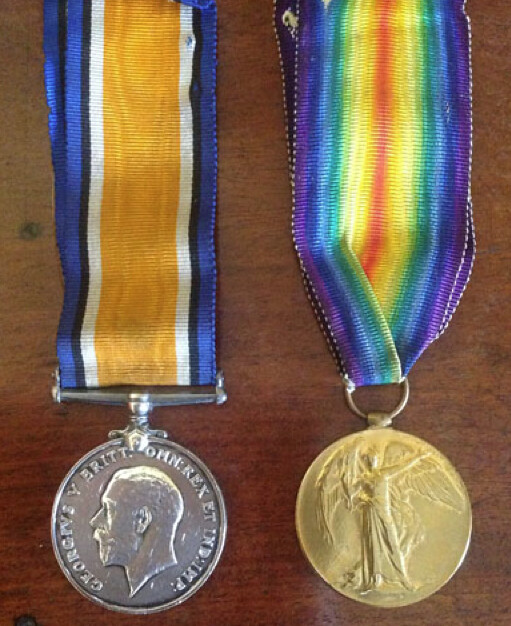
What you see above are two British World War I medals that were awarded to a man named Joseph Brown, who died in 1967. The medals were recently inherited by a friend of Brown's family named David Gillespie, who works at the UK's National Archives. Gillespie never knew Brown but wanted to learn more about the man whose medals he now owned, so he did some research, consulted with various family members, and came up with an account of Brown's military career.
As Permanent Record stories go, this one is fairly standard stuff. The medals weren't found objects, and Gillespie already knew the identity of the man behind them, so no serious detective work was required, and there were no major revelations. So why am I bothering to write about this storyline? Because I'm fascinated by the ribbons attached to the medals. They're so colorful and bright -- the one on the right looks almost tie-dyed!
My response to the ribbons made me realize that we (or at least I) tend to visualize World War I exclusively in black-and-white, maybe with sepia-toned accents, which has the effect of making it seem less real, more like a fable. The presence of color -- especially bright, vibrant color as seen in those ribbons -- has a completely transformative effect on my perception of the that period in history. Interesting.
By coincidence, I happen to own an old ribbon catalog. It's from the 1940s, so it's not nearly as old as Brown's medals. Still, it has some interesting stories to tell, which I wrote about in an article for the very wonderful Cabinet magazine several years ago. If you're curious, you can see that here.
(My thanks to Jacob Sherman for pointing me toward this one.)

You are right on the money about The Great War being a black-and-white one. The only color images that pop into my head involve the Red Baron, and only then because of the use of the color in his nickname and the movies that have been made.
ReplyDeleteReading this reminded me of the Carbon Leaf song called "The War Was in Color," about a grandson who finds a box of old pictures & war things, and asks "was it like the old war movies?" Then the song is from the POV of the deceased (seemingly killed in action) grandfather about the war: crawling over sand, dodging shells, burial at sea, etc. The repeating lines of "these black & white photos don't capture the skin" and "trust me grandson, the war was in color" especially popped into my head while I was reading this post.
ReplyDeleteThey hadn't gone nearly as far as we have in the camouflage department back then so they were actually sometimes costumed in garish colors. Ships were painted pink (to blend in with the evening sky) and blue and other colors as they learned which ones best suited modern warfare.
ReplyDeleteI recommend WWI in Colour (use the word 'color' and you can find it online easily enough and watch it there) if you want.
Anyhow, planes were many colors as well. The dress uniforms were amusing, as I mentioned above, as they were often brilliant colors and garish in nature.
I realize this thread/post is old but I feel compelled to add this. It is astounding how different things were then and tragic how greatly we were impacted by the wars. The interwar period was just them re-arming for another go and, during that time, they really improved their camouflage, generic colors, and means of killing one another.